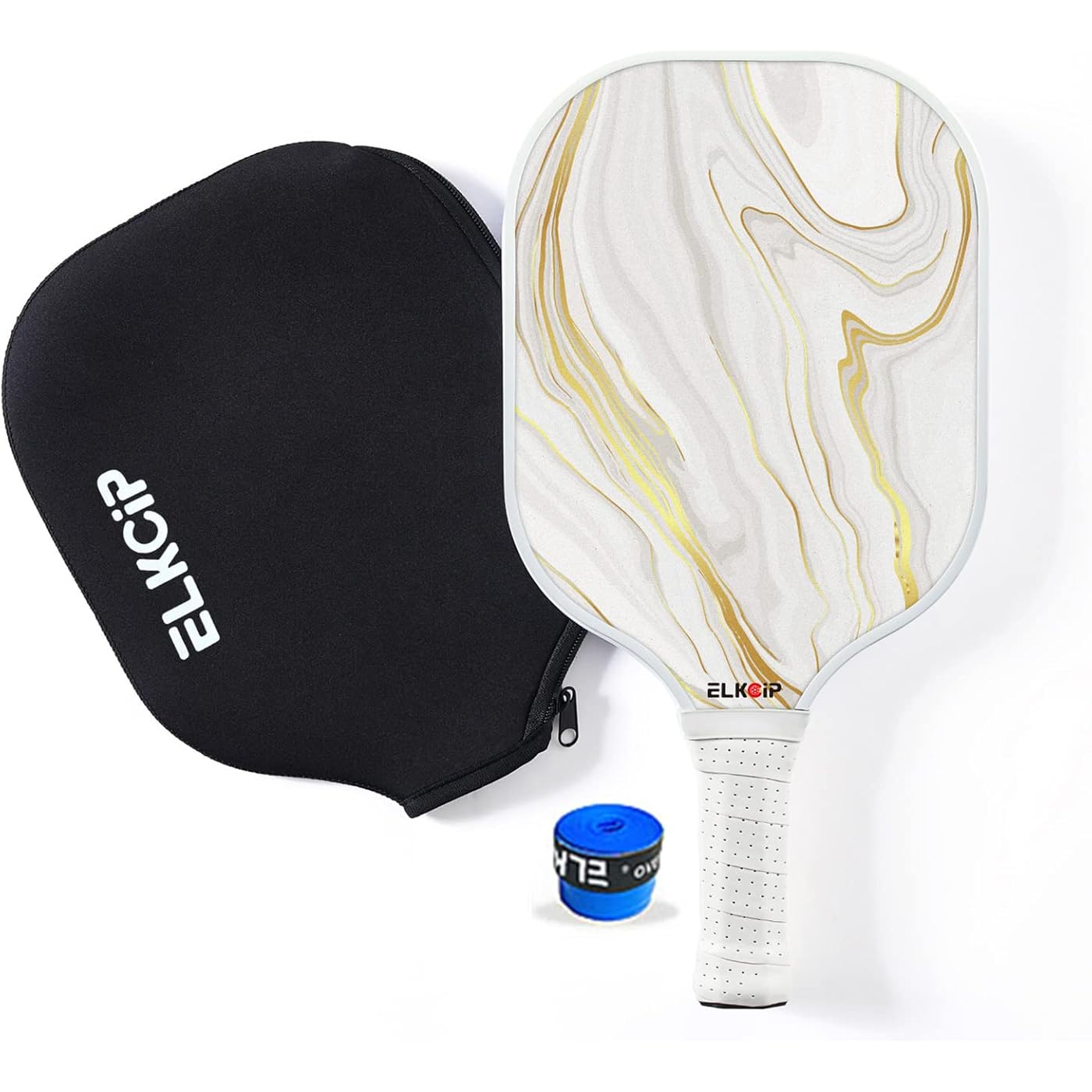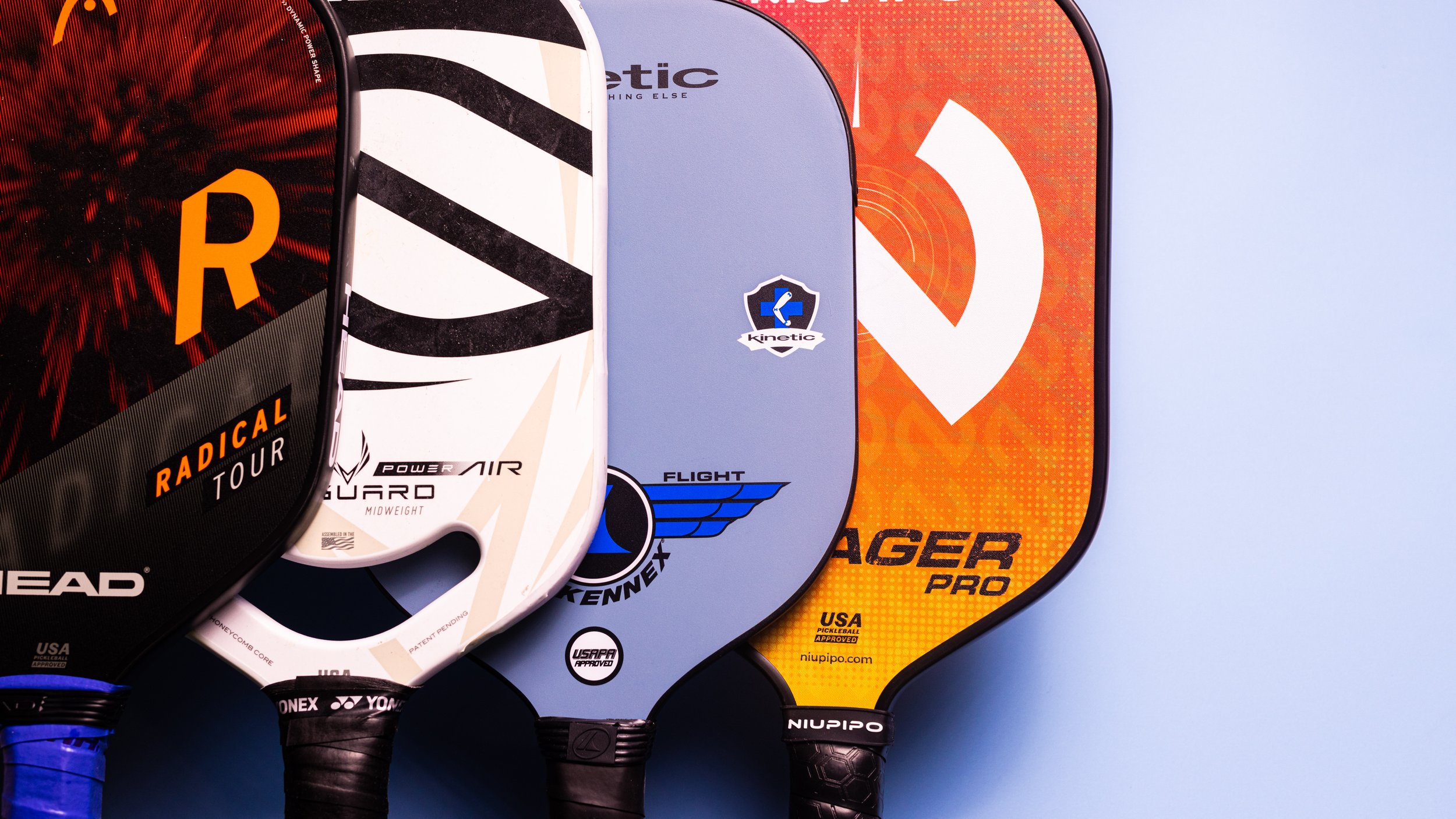Composite vs Carbon Fiber Pickleball Paddles: The Ultimate Guide
In the world of pickleball, choosing the right paddle is a critical decision that can significantly impact your game. With a multitude of options available, the choice between composite and carbon fiber paddles often arises. Both materials have unique properties that cater to different playing styles and skill levels. Let’s take a deep dive into the differences, pros, and cons of composite vs carbon fiber pickleball paddles to help you make an informed decision.

Introduction
Pickleball has rapidly grown in popularity, captivating players of all ages with its approachable yet competitive nature. As with any sport, the equipment you choose can make a substantial difference in your performance. Two of the most common materials used in pickleball paddles are composite and carbon fiber. Understanding these materials’ distinct characteristics can guide you toward a paddle that best complements your playing style and enhances your overall experience on the court.
What Are Composite Paddles?
Composite Pickleball paddles combine multiple materials, including fiberglass, carbon fiber, and polymers, to create a versatile and high-performance paddle. This blend of materials offers several benefits and some drawbacks.

Benefits of Composite Paddles
- Durability: Composite paddles are renowned for their durability. The combination of materials such as fiberglass and polymers ensures the paddle can withstand repeated impacts without cracking or breaking. This makes composite paddles an excellent choice for beginners and recreational players who may not yet have perfected their swing techniques.
- Power: Composite paddles often come with a slightly larger surface area and heavier weight, allowing players to generate more power and spin in their shots. This added weight can be beneficial for hitting long, powerful strokes that push opponents to the back of the court.
- Sweet Spot: These paddles tend to have a larger sweet spot, which refers to the area on the paddle face that produces the most effective shots. A larger sweet spot can help players hit more consistent, effective shots even when the ball is not perfectly centered on the paddle.
Drawbacks of Composite Paddles
- Weight: Composite paddles are generally heavier than their carbon fiber counterparts. While this can add power to your shots, it can also lead to quicker fatigue, particularly during extended play sessions. This added weight may also reduce the swing speed, which can be a disadvantage for players who rely on quick, agile movements.
- Cost: Composite paddles can be more expensive than entry-level paddles made purely from wood or lower-grade materials. However, they are usually less expensive than high-end carbon fiber paddles.
- Sound: When hitting the ball, composite paddles produce a distinct sound that some players find less appealing than the quieter, more muted sound associated with carbon fiber paddles. This audible difference can be distracting for some players and may take some getting used to.
What Are Carbon Fiber Paddles?
Carbon fiber pickleball paddles are made from woven strands of carbon fiber, often layered with other materials to enhance strength and stability. These paddles are known for their lightweight nature, exceptional strength-to-weight ratio, and precision.

Benefits of Carbon Fiber Paddles
- Lightweight: One of the primary advantages of carbon fiber paddles is their lightweight construction. This makes them easier to maneuver and allows for faster swing speeds, which can lead to more powerful shots. The reduced weight can also be less taxing on the arm and shoulder, allowing players to maintain their performance over longer periods.
- Control: Carbon fiber paddles offer greater control and precision due to their construction. The material provides a more connected feel, giving players a better sense of where the ball will go upon impact. This precision is particularly beneficial for players who rely on finesse and strategic placement rather than sheer power.
- Responsive: These paddles offer a quick response to the player’s input, which can make them feel more natural and responsive during play. The enhanced feedback can help players make split-second adjustments, improving their overall performance.
Drawbacks of Carbon Fiber Paddles
- Cost: Carbon fiber paddles tend to be more expensive than composite paddles. The advanced pickleball paddle materials and manufacturing processes required to produce these paddles contribute to their higher price point. However, many players find the investment worthwhile given the performance benefits.
- Durability: While carbon fiber is incredibly strong, it can be more susceptible to damage if mishandled or subjected to severe impacts. The rigidity of carbon fiber can make the paddles more prone to chipping or cracking if they are not properly cared for.
- Sweet Spot: Carbon fiber paddles often have a smaller sweet spot compared to composite paddles. This can make them less forgiving for beginners who may not consistently hit the ball in the optimal area of the paddle face.
Comparing Composite and Carbon Fiber Paddles

To provide a clearer comparison between composite and carbon fiber paddles, here is a table highlighting their key characteristics:
| Category | Composite Paddles | Carbon Fiber Paddles |
|---|---|---|
| Material | Fiberglass, polymers, carbon fiber, Kevlar | Woven carbon fiber strands |
| Weight | Heavier, adds power but can lead to quicker fatigue | Lightweight, easier to maneuver and sustain |
| Durability | Highly durable, resistant to wear and tear | Durable but can be more susceptible to damage |
| Power | Offers more power and spin due to heavier construction | Provides power with faster swing speeds |
| Control | Good control, larger sweet spot | Greater control and precision, smaller sweet spot |
| Sweet Spot | Larger sweet spot, more forgiving | Smaller sweet spot, better for experienced players |
| Cost | Generally more affordable | More expensive due to advanced materials and construction |
Which Type of Paddle Is Right for You?
Choosing between composite and carbon fiber paddles ultimately comes down to your individual playing style, skill level, and budget. Here are some key factors to consider:
Playing Style
- Power Players: If you rely on powerful serves, smashes, and drives to dominate your opponents, a composite paddle might be the better choice. The added weight and larger sweet spot can help you generate more power and spin in your shots.
- Control Players: If you prefer a more strategic game that focuses on precise shot placement, dinks, and drop shots, a carbon fiber paddle may be more suitable. The lightweight construction and enhanced control can help you execute delicate maneuvers with greater accuracy.
Skill Level
- Beginners: New players often benefit from the durability and forgiving nature of composite paddles. The larger sweet spot and additional power can help beginners develop their skills and build confidence on the court.
- Advanced Players: Experienced players who have honed their technique and value precision may prefer the responsiveness and control offered by carbon fiber paddles. These paddles can help advanced players refine their strategies and execute more complex shots.
Budget
- Budget-Conscious: If budget is a primary concern, composite paddles generally offer a more affordable option without compromising performance. They provide a good balance of durability, power, and control.
- Performance-Driven: For players willing to invest in the best possible equipment, carbon fiber paddles can provide superior performance and a more connected feel. The higher cost is often justified by the enhanced precision and responsiveness.
Conclusion
Both composite and carbon fiber pickleball paddles offer unique advantages and cater to different playing styles and skill levels. Composite paddles are known for their durability, power, and larger sweet spot, making them a great choice for beginners and recreational players. On the other hand, carbon fiber paddles provide exceptional control, precision, and a lightweight feel, appealing to advanced players who prioritize finesse and strategic play.
Ultimately, the best paddle for you is one that aligns with your individual needs, playing style, and budget. It’s essential to try out different options and see what feels most comfortable and effective for your game. By carefully considering the nuances of each material, you can select a paddle that helps you unlock your full potential on the pickleball court.
Have you tried composite or carbon fiber paddles before? We’d love to hear about your experiences and preferences in the comments below. Don’t forget to visit our website and social media pages for more information on pickleball equipment, tips, and tricks. Happy playing!
